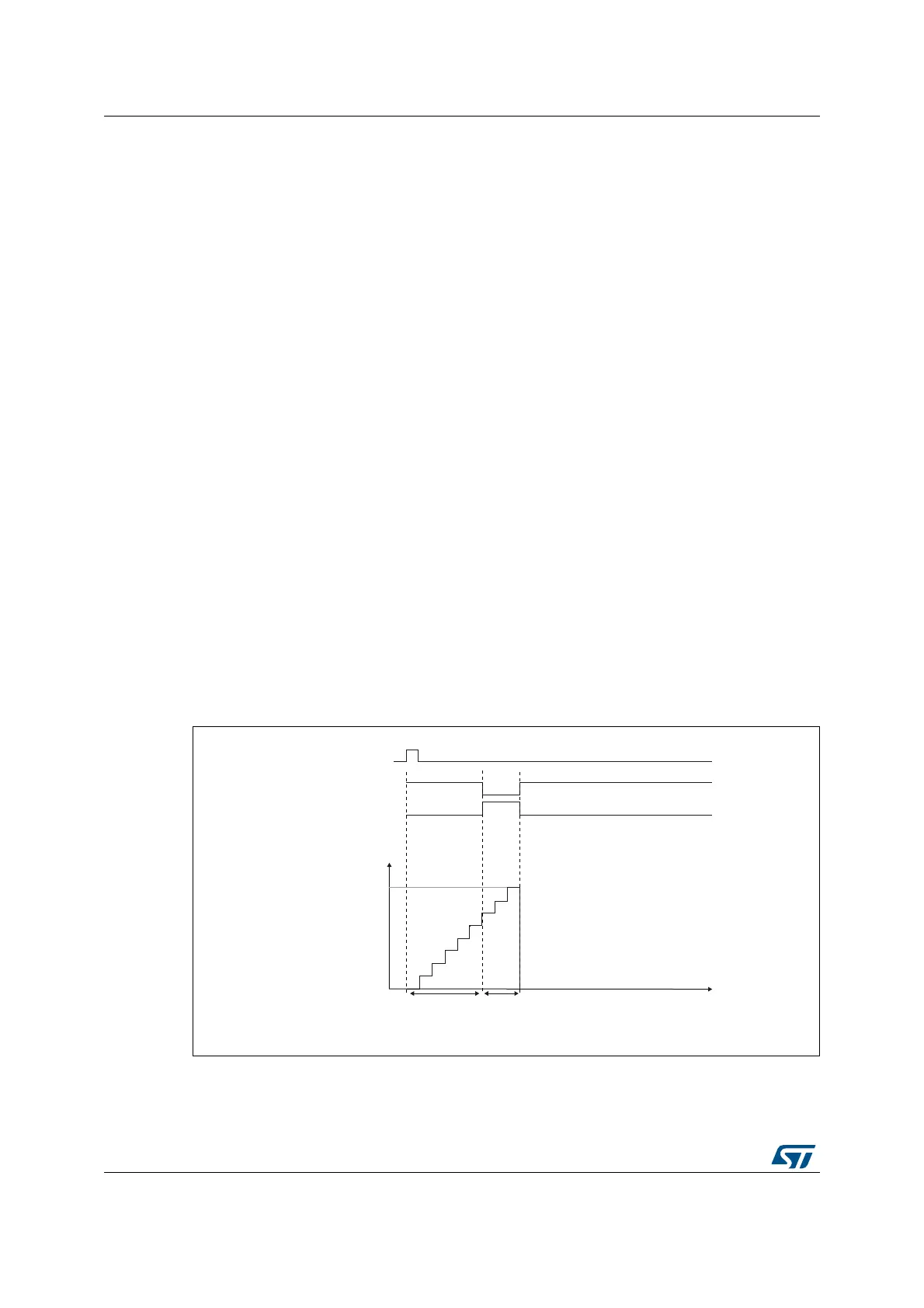General-purpose timers (TIM5) RM0401
362/771 RM0401 Rev 3
in the TIMx_CR1 register. Moreover, the DIR and CMS bits must not be changed at the
same time by the software.
• Writing to the counter while running in center-aligned mode is not recommended as it
can lead to unexpected results. In particular:
– The direction is not updated if a value greater than the auto-reload value is written
in the counter (TIMx_CNT>TIMx_ARR). For example, if the counter was counting
up, it continues to count up.
– The direction is updated if 0 or the TIMx_ARR value is written in the counter but no
Update Event UEV is generated.
• The safest way to use center-aligned mode is to generate an update by software
(setting the UG bit in the TIMx_EGR register) just before starting the counter and not to
write the counter while it is running.
15.3.10 One-pulse mode
One-pulse mode (OPM) is a particular case of the previous modes. It allows the counter to
be started in response to a stimulus and to generate a pulse with a programmable length
after a programmable delay.
Starting the counter can be controlled through the slave mode controller. Generating the
waveform can be done in output compare mode or PWM mode. One-pulse mode is selected
by setting the OPM bit in the TIMx_CR1 register. This makes the counter stop automatically
at the next update event UEV.
A pulse can be correctly generated only if the compare value is different from the counter
initial value. Before starting (when the timer is waiting for the trigger), the configuration must
be:
• In upcounting: CNT<CCRx ≤ ARR (in particular, 0<CCRx),
• In downcounting: CNT>CCRx.
Figure 127. Example of one-pulse mode
For example one may want to generate a positive pulse on OC1 with a length of t
PULSE
and
after a delay of t
DELAY
as soon as a positive edge is detected on the TI2 input pin.
069
7,
2&5()
&RXQWHU
W
7,0B$55
7,0B&&5
2&
W
'(/$<
W
38/6(
